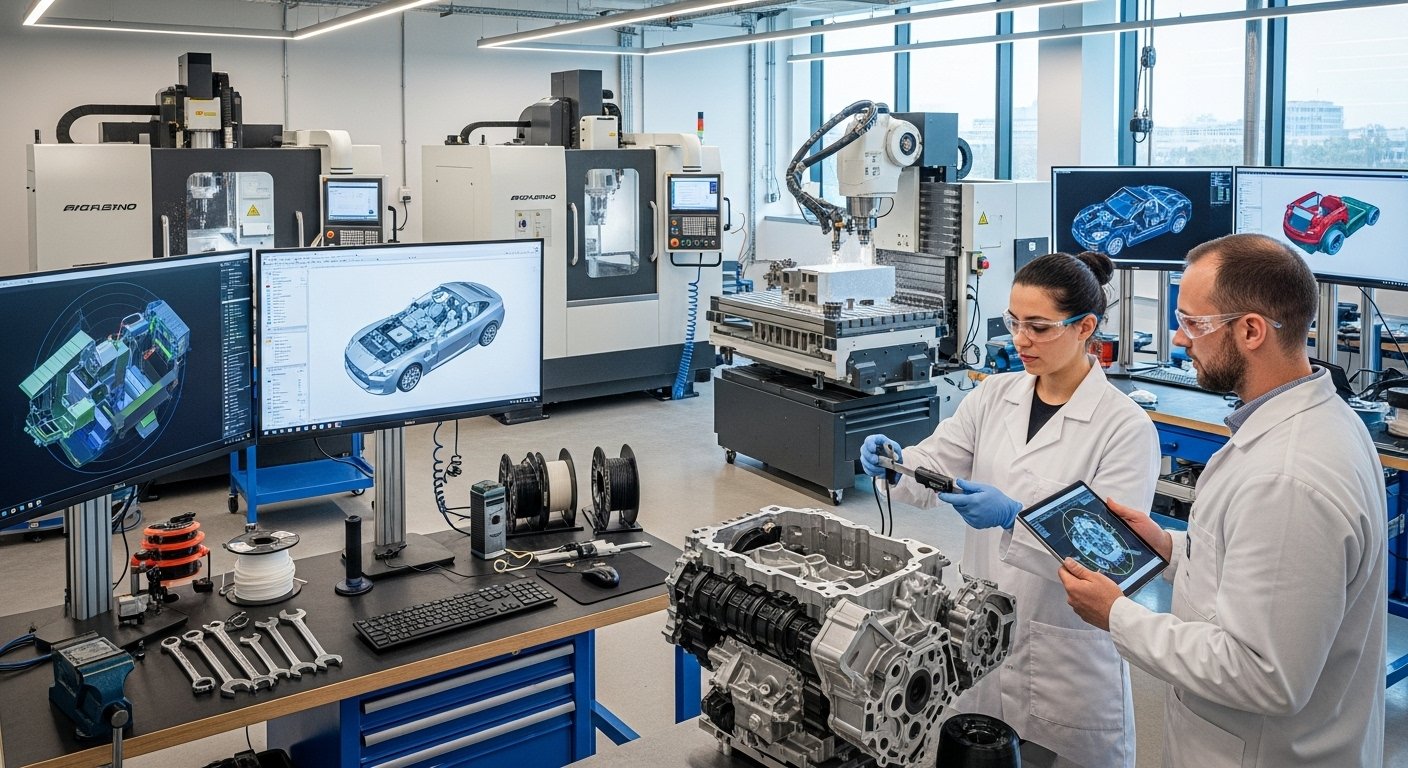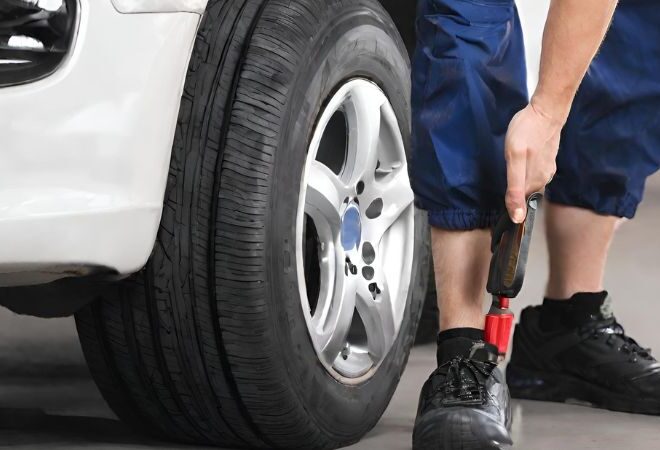
Automotive Prototype Manufacturing: A Compelte Guide
Have you ever wondered how car manufacturers turn innovative ideas into reliable vehicles on the road? Automotive prototype manufacturing is the crucial bridge between concept and production. This process allows engineers and designers to create, test, and refine parts before committing to mass production. In today’s fast-paced automotive industry, where electric vehicles and autonomous tech are booming, efficient prototyping can make or break a project’s success.
Whether you’re an automotive engineer, a startup founder, or simply curious about vehicle development, understanding automotive prototype manufacturing is key. It involves advanced technologies like 3D printing and CNC machining to produce functional prototypes quickly and cost-effectively. By the end of this guide, you’ll grasp why this step is indispensable for innovation and quality assurance in the automotive sector.
What is Automotive Prototype Manufacturing?
Automotive prototype manufacturing refers to the creation of preliminary models or samples of vehicle parts and systems. These prototypes mimic the final product in form, fit, and function, allowing for real-world testing without the high costs of full-scale production.
Unlike traditional manufacturing, which focuses on volume, prototyping emphasizes speed and iteration. It uses rapid techniques to build parts from digital designs, often in days rather than months. This approach is vital for everything from engine components to interior dashboards.
Think about it: Would you launch a new car model without first checking if the bumper withstands impacts? Prototyping ensures that doesn’t happen, reducing risks and enhancing design accuracy.
The Importance of Prototyping in the Automotive Industry
In a competitive market, automotive companies can’t afford delays or defects. Prototyping streamlines development, cutting time-to-market by up to 50% in some cases. It enables early detection of flaws, saving millions in potential recalls.
Benefits of Rapid Prototyping
Rapid prototyping offers several advantages. First, it accelerates innovation by allowing quick iterations. Designers can test multiple versions of a part, like a lightweight alloy wheel, to optimize performance.
Second, it’s cost-effective. Traditional tooling can cost hundreds of thousands, but prototyping uses affordable methods to validate ideas early. This minimizes waste and aligns with sustainable practices, such as using recycled materials.
Third, it boosts collaboration. Teams from engineering to marketing can interact with tangible models, gathering feedback that refines the product. For instance, a prototype electric vehicle battery housing can be tweaked for better heat dissipation based on real tests.
Key Purposes and Applications
Prototypes serve multiple roles. Design verification checks if parts fit and function as intended. Market research involves showing prototypes to focus groups for insights on aesthetics or usability.
Accuracy and security testing are critical too. Prototypes undergo rigorous simulations, like crash tests for bumpers or durability trials for suspension systems. In electric vehicles, prototyping helps ensure battery safety and efficiency.
Applications span from custom body parts to legacy replacements. Even commercial vehicles benefit, with prototypes for heavy-duty components like truck frames.
Key Technologies in Automotive Prototype Manufacturing
Modern prototyping relies on cutting-edge tools. These technologies enable precise, scalable production of complex parts.
1. 3D Printing
3D printing, or additive manufacturing, builds parts layer by layer from materials like plastics or metals. It’s ideal for complex geometries, such as intricate engine manifolds that traditional methods can’t easily produce.
In automotive, 3D printing speeds up development. For example, BMW uses it for custom prototypes, reducing lead times from weeks to days. It’s eco-friendly too, minimizing material waste.
2. CNC Machining
Computer Numerical Control (CNC) machining carves parts from solid blocks using automated tools. It delivers high precision for metal components like cylinder heads or brackets.
This method excels in functional testing, as prototypes match production quality. Lead times are short, often 3-7 days, making it perfect for iterative design.
3. Injection Molding
For plastic parts, injection molding creates prototypes by injecting molten material into molds. Rapid tooling variants allow small batches without expensive full molds.
It’s used for items like dashboards or lenses. A case study from tail light production shows how it cuts costs for low-volume runs.
4. Vacuum Casting and Rapid Tooling
Vacuum casting uses silicone molds for polyurethane parts, great for small series like 20-50 units. Rapid tooling combines this with injection for faster iterations.
These are affordable for testing aesthetics, like interior trims, before committing to steel molds.
5. Sheet Metal Fabrication
This involves cutting, bending, and welding metal sheets for prototypes like bumpers or chassis. Laser cutting ensures accuracy, while welding adds strength.
It’s essential for structural parts in vehicles, supporting quick modifications.
Steps in the Automotive Prototyping Process
Creating a prototype follows a structured path. Let’s break it down.
1. Design and Conceptualization
Start with sketches and CAD software. Engineers create 3D models, simulating performance virtually. Tools like SolidWorks help visualize parts like steering components.
This phase incorporates feedback, ensuring the design meets specs.
2. Material Selection
Choose materials that mimic final products. For durability, opt for aluminum or steel; for flexibility, nylon or silicone.
Consider factors like weight, cost, and sustainability. Recycled plastics are increasingly popular for eco-conscious designs.
3. Prototype Creation
Using chosen tech, build the prototype. 3D printing for quick mocks, CNC for precise functionals.
Outsourcing to specialists like 3ERP can handle complex needs.
4. Testing and Iteration
Test for fit, function, and safety. Use simulations or real-world trials, like wind tunnel tests for aerodynamics.
Iterate based on results—adjust dimensions or materials. This loop refines until perfection.
5. Transition to Mass Production
Once validated, scale up. Fine-tune processes, conduct quality checks, and prepare tooling. This ensures seamless shift, avoiding production hiccups.
Materials Used in Automotive Prototypes
Material choice impacts performance and cost.
1. Metals (Steel, Aluminum, Titanium)
Steel offers strength for frames; aluminum lightness for efficiency; titanium durability for high-stress parts like valves.
These ensure prototypes withstand tests, like impact simulations.
2. Plastics and Polymers
Nylon for engine covers, PMMA for lights, silicone for seals. They’re versatile, lightweight, and moldable.
3. Other Materials
Composites or recycled blends for sustainability. They reduce environmental impact while maintaining quality.
Conclusion
Automotive prototype manufacturing is the backbone of vehicle innovation. It ensures safe, efficient, and market-ready products. By leveraging technologies like 3D printing and CNC, companies can stay ahead.
Ready to prototype your next automotive idea? Explore services from experts to bring concepts to life. For more on related topics, check our guides on rapid prototyping techniques or sustainable automotive materials.
Explore More Topic: Decking Types and Benefits
FAQ
1. What is the role of 3D printing in automotive prototype manufacturing?
3D printing allows for quick creation of complex parts, reducing lead times and enabling easy iterations in vehicle design.
2. How does CNC machining benefit automotive prototyping?
CNC machining provides high-precision prototypes that closely match production parts, ideal for functional testing and accuracy.
3. Why is material selection important in automotive prototypes?
Choosing the right materials ensures prototypes mimic real-world performance, aiding in durability, weight, and cost evaluations.
4. What are the steps to transition from prototype to mass production?
After testing and iteration, refine designs, prepare tooling, and conduct quality checks to scale efficiently.



